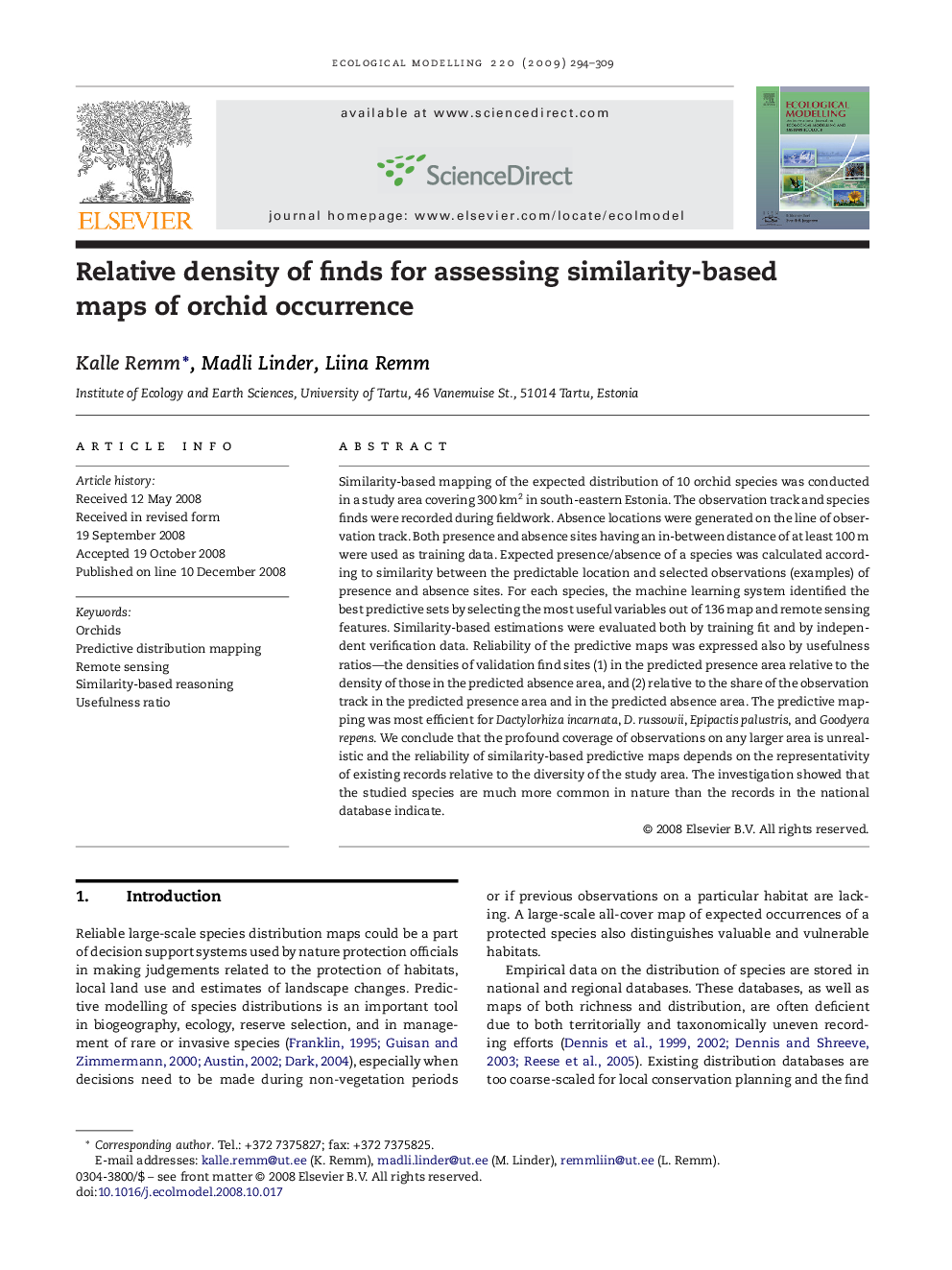| Article ID | Journal | Published Year | Pages | File Type |
|---|---|---|---|---|
| 4378284 | Ecological Modelling | 2009 | 16 Pages |
Abstract
Similarity-based mapping of the expected distribution of 10 orchid species was conducted in a study area covering 300Â km2 in south-eastern Estonia. The observation track and species finds were recorded during fieldwork. Absence locations were generated on the line of observation track. Both presence and absence sites having an in-between distance of at least 100Â m were used as training data. Expected presence/absence of a species was calculated according to similarity between the predictable location and selected observations (examples) of presence and absence sites. For each species, the machine learning system identified the best predictive sets by selecting the most useful variables out of 136 map and remote sensing features. Similarity-based estimations were evaluated both by training fit and by independent verification data. Reliability of the predictive maps was expressed also by usefulness ratios-the densities of validation find sites (1) in the predicted presence area relative to the density of those in the predicted absence area, and (2) relative to the share of the observation track in the predicted presence area and in the predicted absence area. The predictive mapping was most efficient for Dactylorhiza incarnata, D. russowii, Epipactis palustris, and Goodyera repens. We conclude that the profound coverage of observations on any larger area is unrealistic and the reliability of similarity-based predictive maps depends on the representativity of existing records relative to the diversity of the study area. The investigation showed that the studied species are much more common in nature than the records in the national database indicate.
Related Topics
Life Sciences
Agricultural and Biological Sciences
Ecology, Evolution, Behavior and Systematics
Authors
Kalle Remm, Madli Linder, Liina Remm,
